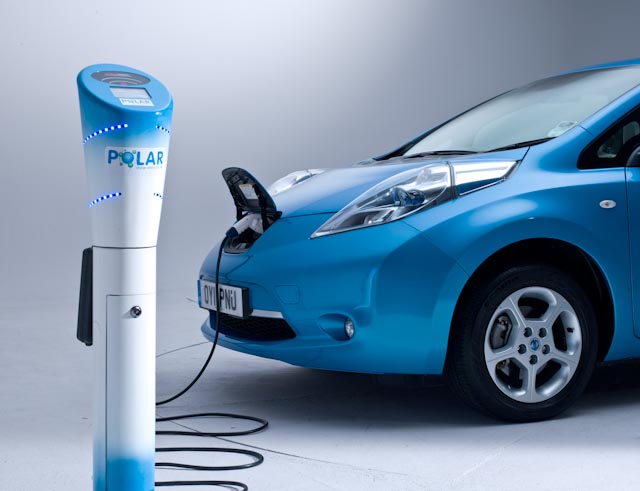California is a largely temperate state with a longstanding history of working to curb vehicle emissions.
That makes it a perfect place for plug-in electric cars.
The Northeastern states, on the other hand, are in the Snow Belt, meaning electric cars can lose as much as one third of their battery range in the coldest winter months.
So what will it take to boost plug-in sales in the Northeast, where less than 10 percent of last year's 53,000 plug-in electric cars were sold?
According to a report cited in The New York Times, the answer is more prevalent public charging infrastructure.
Only 1,000 NE charging stations
The report, Siting and Design Guidelines for Electric Vehicle Supply Equipment, was prepared last November for the New York State Energy Research and Development Authority.
It notes that at the time, almost 1,000 public charging stations existed among the Northeast states, but that only three-quarters of them were publicly accessible.
And some were only 110-Volt Level 1 stations, which can take 20 hours or more to refill a completely depleted battery pack in a Nissan Leaf, for example.
The report offers a sort of blueprint for rolling out more charging stations, including siting guidelines, policy changes, and many other parts of the process.
Such reports are a necessary part of the gradual increase in plug-in cars that will take place over the next couple of decades.
But two issues need to be kept in mind while pushing for vast increases in charging stations before the cars are actually on the roads.
Charging needed, but not used
First is what many analysts call "the TEPCO Paradox," named after the Tokyo Electric Power Company (now better known as the operator of the failed Fukushima nuclear reactor).

Polar Charging Post and Nissan Leaf
In an early test several years ago of battery-electric cars operated by volunteers in Tokyo, TEPCO found that drivers would use plug-in cars only to perhaps half their range.
Asked why, they predictably cited range anxiety--the fear of not being able to make it back home.
What would alleviate that? Why, publicly available charging stations, of course--so they could recharge en route, or if they had to make unexpected detours.
TEPCO duly installed a network of charging stations--and, indeed, the cars were used to a greater degree.
Most of the increased mileage, however, did not come from use of those charging stations, which was far lower than projected.
It came simply from driver confidence that a fallback was available--even though the drivers rarely used it.
The moral of the story: Install just enough charging stations to deliver that confidence--but no more.
Cars far more crucial?
Second, many analysts argue that it's far more important to get plug-in cars on the road before worrying about charging infrastructure, even if most must be recharged overnight in garages.

ChargePoint charging station at Zen Dog Cafe, Rhinebeck, NY
Writing last fall in Wired, electric-car advocate Chelsea Sexton argues that battles over charging technology standards simply distract from the primary challenge: getting more plug-in electric cars on the road.
Providing electricity isn’t the problem, Sexton says: it’s ubiquitous, simple to use, and an ideal vehicle fuel. And charging stations are relatively cheap to install when demand is there.
In this vision, not just government-funded entities but private businesses will step up provide charging.
In a few years, electric-car charging will be like WiFi access is today: free in places that want to draw customers, paid in other places that view it as a profit-making amenity.
Either way, expect to see more charging stations in the Northeast over the next couple of years.
But not nearly as many as in California or the Pacific Northwest.
+++++++++++












